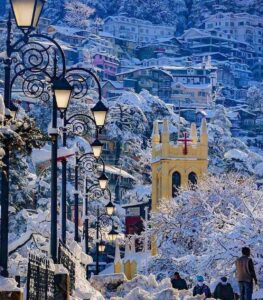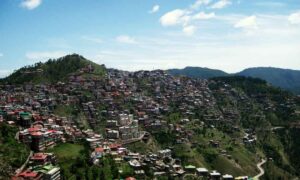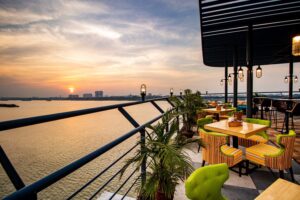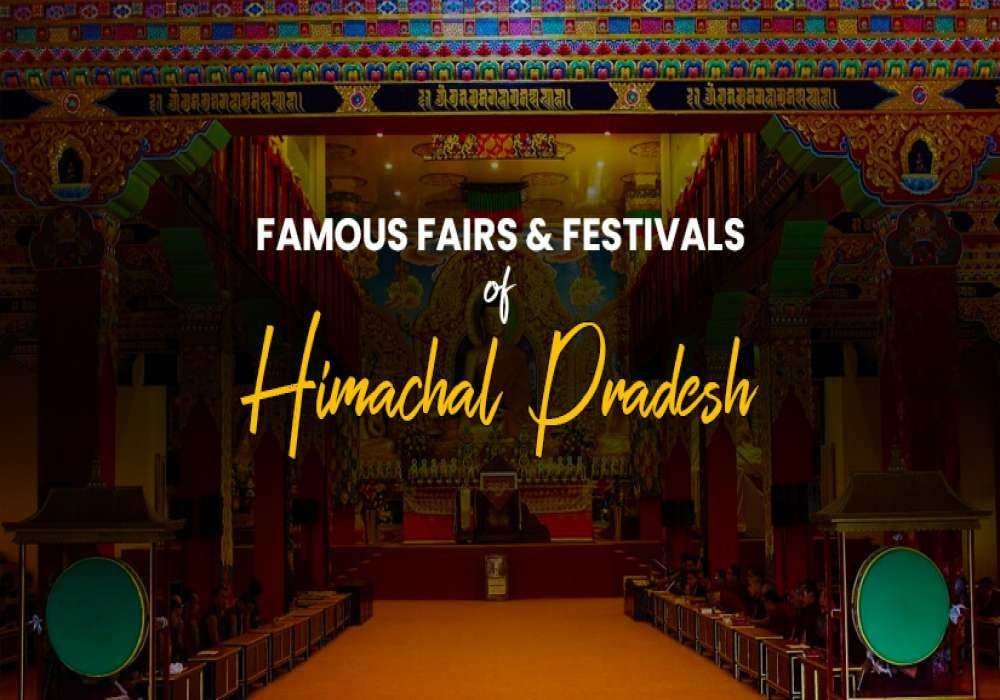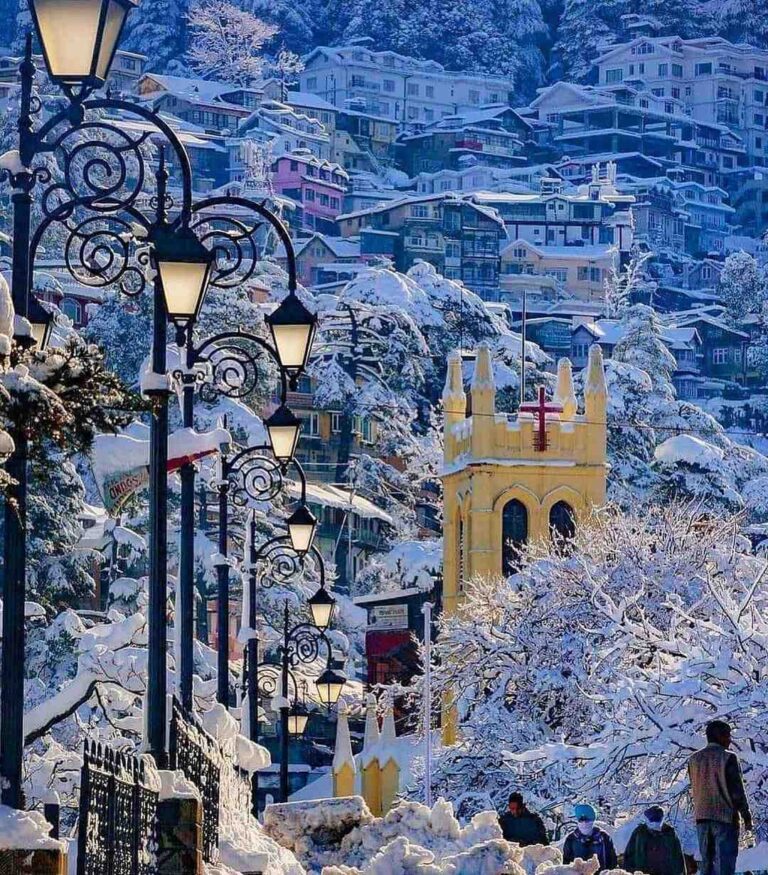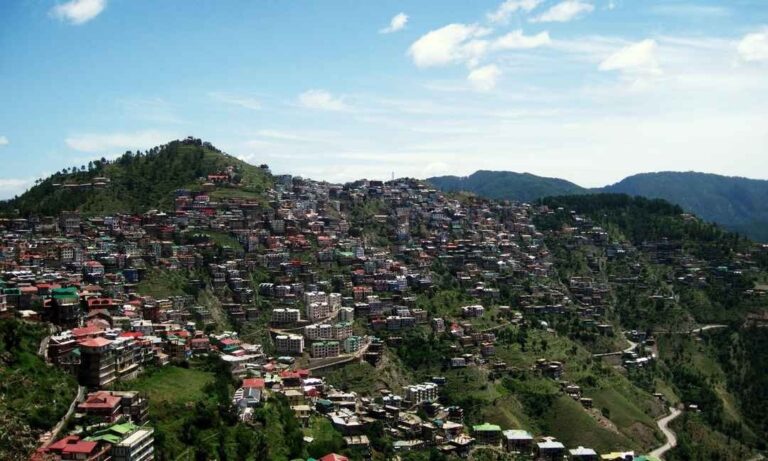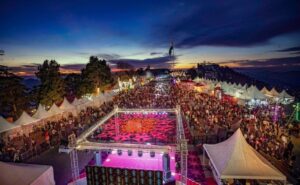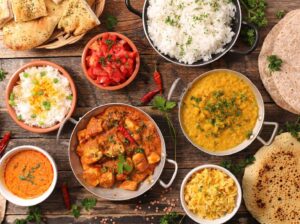Shimla, perched among the Himalayas, is more than just a summer retreat or colonial relic. Its soul lives in its festivals — the local fairs, religious observances, trade gatherings, folk dances, and community rituals. These celebrations knit together faith, culture, history, commerce, and nature in unique ways. Below, you’ll find an in‑depth look at ten of Shimla’s most important fairs & festivals: their histories, what they are like today, what to expect, and how best to experience them.
1. Shimla Summer Festival
History & Origins
The Shimla Summer Festival is one of the most celebrated and visible annual festivals in Shimla. It was instituted in 1960 as one of three summer festivals by the Himachal Pradesh government to promote tourism, thanks to the gods for the harvest, and welcome the summer season. Wikipedia+2Himalayan Geographic+2
Over decades, the festival has evolved: what started primarily as a tourist attraction with a small set of cultural performances has expanded to include a plethora of events: local folk arts, traditional dance and music, competitions, exhibitions, fashion shows showcasing Himachali clothing, food & crafts stalls, and more. Himachal Tonite+3shimlaindia.net+3Wikipedia+3
When & Where
- Usually held in May or early June, depending on local administrative scheduling. Himachal Tonite+2Wikipedia+2
- In 2025, it is scheduled from June 1 to June 5. adventureresortkufri.com+1
- The main venue is the Ridge Maidan (Ridge Ground), Shimla. Other ancillary venues across Shimla may host associated events. adventureresortkufri.com+3Himachal Tonite+3Himalayan Geographic+3
What Happens: Celebrations & Highlights
The Summer Festival is a mix of culture, fun, awareness, and local flavor. Some key activities:
- Cultural Nights & Performers: Folk music & dance (for example, Nati dance, which is native to Himachal), among other forms. Regional artists alongside national or even international acts appear. Himalayan Geographic+3shimlaindia.net+3Himachal Tonite+3
- Themed Evenings & Social Campaigns: In 2025, themes like “Drive Against Drugs” and “Beti Bachao, Beti Padhao” have been prominent. News Arena India+2adventureresortkufri.com+2
- Competitions & Exhibitions: Photography, poster‑making, flower shows, art displays, fashion shows (especially folk dress). shimlaindia.net+2adventureresortkufri.com+2
- Food, Handicrafts & Local Market Stalls: Multiple stalls for food, Himachali snacks, handicrafts, local clothing etc. It’s a good time to taste regional flavors and buy souvenirs. Himalayan Geographic+2shimlaindia.net+2
- Other Events: Sports tournaments (table tennis etc.), children’s activities, flower shows etc. In 2025, the festival organizers have included inter‑school competitions. Himachal Tonite+2adventureresortkufri.com+2
Visitor Experience & What to Expect
- The Ridge ground becomes lively with lights, people, music. In connecting with local culture, you will see folk costumes, regional food, artisan shops.
- Evenings are magical: performances under string lights, cool mountain breezes, perhaps fog or stars depending on clarity.
- Because of the popularity, there will be large crowds, especially on weekends or when popular performers are scheduled.
Challenges & Tips
- Accommodation & Travel: Book early. Shimla sees an influx of visitors during this period, so lodging and transport can fill up.
- Weather: May‑June is pleasant, but evening/nights can be chilly. Carry warm wraps. Also, occasional rain may surprise, so a light rain jacket is helpful.
- Entry & Crowd Management: Some areas of Ridge may have regulated entry, security zones. Expect crowds. Arrive early for popular events.
- Local Customs & Respect: Dress appropriately for cultural events. Support local vendors. Be mindful of waste & environmental aspects (trash disposal etc.).
Significance
- The Summer Festival is one of the defining modern festivals of Shimla. It reinforces the town’s identity as a cultural hub, not just a colonial hill station.
- It supports the local economy (artists, craftsmen, small vendors) and helps younger generations connect with folk traditions.
- The introduction of social themes like drug awareness shows how festivals are being used not just for entertainment but social good.
2. Lavi Fair (Rampur Bushahr)
History & Origins
The Lavi Fair, also known as International Lavi Mela, is one of the oldest trade fairs in Himachal Pradesh. It has its roots in the 17th century, derived from a trade treaty between Bushahr State and Tibet during the reign of Raja Kehari Singh. The treaty formalized trade such that Bushahri and Tibetan merchants would be free from taxes when trading in each other’s territories.
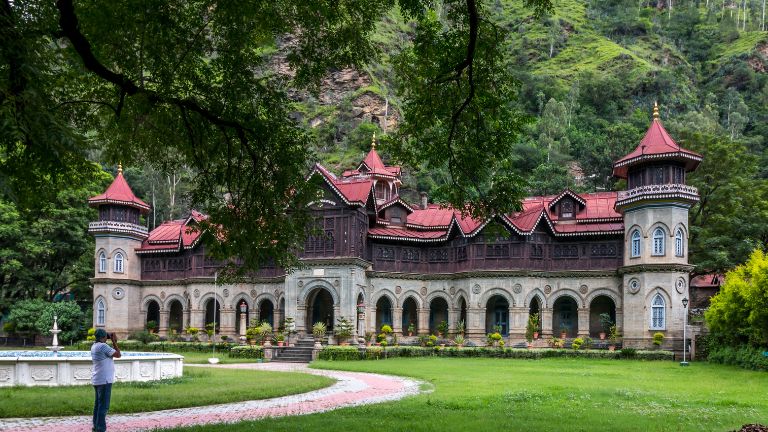
Rampur Bushahr, about 132 km from Shimla, was historically a major trade center and a node on the old silk‑route, connecting Afghanistan, Tibet, Ladakh, and other northern states. Traders from various regions used to come here with goods like raw wool, pashmina, herbs, leather goods etc., and return with staple foods, salt, and other essentials. Business Standard+4hindu-calendar.com+4The Tribune+4
When & Where
- Held annually from November 11 to November 14. Wikipedia+2Business Standard+2
- Location: Rampur Bushahr, along the Sutlej river. Main venues include the PGSS Boys’ School, Part Bungalow area, NH‑05 adjacent small trader stalls etc. Wikipedia+2The Tribune+2
Celebrations & Highlights
- Trade & Trading Goods: Lavi Fair’s backbone is commerce. Woolens, dry fruits, medicinal herbs, leather items, farm produce, traditional handicrafts, carpets, utensils, etc. Civilstap Himachal+2India Unveiled+2
- Chamurthi Horses: One of the unique features is the trade in the Chamurthi horses (a mountain breed) which attract interest. The Tribune+1
- Cultural Programmes at Night: Evening cultural nights with folk dancers, music, local artists. It’s festive at sight once dusk falls. Wikipedia+2The Tribune+2
- Stalls from Various Regions: Especially Kinnaur, which bring in their produce and crafts. Some stalls are reserved for Kinnauri goods. The Tribune+1
Recent Developments
- As of 2023, at the conclusion of Lavi Fair, local government announced projects worth ₹ 200 crore by the Jal Shakti Department for Rampur area. The Week
- Since 1996, the fair has been officially declared an “international trade fair”. However, after 1962 and the China‑India war, trade from Tibet reduced markedly. The Tribune+3Business Standard+3Wikipedia+3
Visitor Experience & Things to See
- Shopping & Bargains: You’ll find a wide range of goods. For woolens, pashminas, herbal medicines, local delicacies. Plan to spend time browsing.
- Horse Shows / Exhibitions: If your visit aligns, Chamurthi horse auctions or displays are special.
- Cultural Evenings: Folk performance under open skies, local costumes, sounds of traditional Himachali instruments.
- Scenic Experience: The setting near Sutlej river and mountains adds to the ambience; mountain air, cold nights, scenic surroundings.
Tips & Advice
- Dress warmly — November nights are cold in the hills.
- Bring cash: smaller vendors especially may prefer cash; digital options not always present.
- Accommodation in Rampur and nearby towns fill up — plan in advance.
- Road travel: weather may start to affect passes; monitor local advisories.
- Photography: bring camera/gear; the fair is visually rich, especially cultural nights.
Significance
- Lavi Fair is perhaps the richest surviving instance in Himachal of trade fairs that are not just cultural but economic lifelines for rural artisans, pastoralists, merchants.
- It preserves ties with ancient trade routes and mountain economies.
- Its scale (international recognition) and recent government investment show it’s seen as more than local festivity — it’s a driver of development.
3. Sati Pradha Mela / Pathar‑Ka‑Khel (Halog, Dhami)
History & Myth / Legends
Sati Pradha Mela (also known as Pathar-Ka-Khel) is a stone‑throwing fair celebrated annually in Halog, a village from the former princely state of Dhami. It is held a day after Diwali, and has strong mythic origin stories. Wikipedia

According to local legends:
- One version says this tradition goes back to a time when human sacrifice was part of worship of the goddess Kali; later a queen committed sati to stop human sacrifice, and as a substitute, stone‑throwing was instituted, with the blood (from minor wounds) used to mark the idol of Kali. Wikipedia
- Another legend suggests a girl from Halog, engaged to the prince of Rangoli state, committed sati after the prince was allegedly poisoned by people of Jamog village; the fair supposedly commemorates that event. Wikipedia
When & Where
- Held a day after Diwali, in the Kartika month of the Hindu calendar (usually late October or November, depending on lunar calendar). Wikipedia
- Venue: Village Halog, formerly part of Dhami State. The participants are locals — from Halog, Jamog, and allied clans. Wikipedia
Rituals & What Happens
- Stone‑Pelting Contest: Two groups — one from Halog (including Dhagoi, Tundu, Katedu etc.) and the other from Jamog — throw stones at each other. Historically, only clan members, “Khunds”, and members of royal lineage participated in the actual contest. Great care is now taken for safety. Wikipedia
- Processions: The procession starts from the Narsingh temple inside Dhami palace. The Jamogis and Halogis both take part, moving toward the temple grounds of goddess Kali. Wikipedia
- Temple Rituals / Worship: Rituals at the Kali temple, offerings, prayers. Some historical legends involve applying blood (in the past) as tilak to the idol; modern versions have toned down violent or blood elements, yet symbolic aspects persist. Wikipedia
Visitor Experience & What to Expect
- It is not a tourist‑oriented festival in scale: mostly locals attend; the setting is rural/hill village. This gives authenticity.
- The atmosphere is charged with ritual, history, and spectacle (stone‑pelting is dramatic). That said, safety is increasingly emphasized.
- Photographs can be vivid: local people, temples, processions, the participants in their village attire.
Tips & Advice
- If you visit, do so with local guidance (a local contact helps understand lore, rituals, safe viewing spots).
- Dress modestly; ensure you have sturdy shoes (rural paths, possibly slippery).
- Be cautious: stone‑pelting involves real physical risk; observing from safe distance is wise.
- Bring warm clothing; nights post‑Diwali are cold.
- Be respectful: these are sacred rituals for participants.
Significance
- This fair is among those festivals which link myth, ritual, gender (sati), history, and community identity in deeply emotional ways.
- It reveals how folk history, even violence in legend, gets ritualized and transformed into community gathering.
- Sati Pradha is unusual: few such fairs have stone‑pelting as ritual; thus it’s culturally unique in Himachal.
4. Other Notable Fairs & Festivals in Shimla Region
Because Shimla district is large, many fairs & festivals beyond the three already discussed contribute strongly to its cultural texture. Below are several more that you should know if you want a full picture.
4.1 Rohru Fair
History & Overview
- Rohru is a town in Shimla district. It holds a summer fair dedicated to Shikru Devta, a local deity. The fair combines religious devotion with cultural and trading elements. shimlaindia.net+1
- The fair takes place early in the year, aligned with the start of fairs in the agricultural calendar.

When & Where
- On 9th & 10th Baisakh (~April) in many years. The dates can adjust depending on local calendrical systems. shimlaindia.net
- Venue: around Rohru, near the banks of the river Pabbar and adjacent villages.
Celebrations & Highlights
- Local devotees worship Shikru Devta, conduct prayers and rituals.
- Folk music, dance (Nati etc.), performances by local artists.
- Trading and stalls: agricultural produce, wool, local crafts, utensils.
- Possibly some competitions, feasts, etc.
Visitor Tips
- Travel to Rohru may be more challenging than Shimla town — roads, weather.
- Staying overnight can help catch events happening in morning & evening.
- Expect simpler infrastructure (fewer large lodgings) — homestays or village lodging may be best.
Significance
- Reflects upland hill culture: local deities, temple centered rituals, folk arts.
- Helps sustain rural economy: vendors, artisans gain from the fair.
4.2 Bhoj Fair (Guman, Rohru area)
Overview
- The Bhoj Fair is held in Guman village, which is in the Rohru tehsil, in upper Shimla region. It is a fairly large village fair with religious, cultural, and social functions. shimlaindia.net+1

When & Where
- Typically in November, spanning 3 days. shimlaindia.net+1
- Venue: Guman village and surrounding area.
What Happens
- Worship of deities such as Devta Bansor, Parshu Ram, Kilbaru, etc.
- Folk dances, local cultural performances. Nati dance is prominent.
- Local trade stalls: crafts, food, produce.
- Social gathering: people from villages around converge, share meals, reconnect.
Tips & Experience
- Expect cold nights. Rural settings: limited luxury, but high authenticity.
- Good for those interested in folk culture, local crafts, rural social life.
- Bring warm clothing, flashlights, possibly camping gear if staying in simpler setting.
4.3 Mahasu Jatar (Mahasu Village, near Kotkhai)
Overview
- Mahasu Jatar is a temple‑based fair, centered around Durga Devi in Mahasu village, near the Kotkhai route. It combines religious observance with cultural features.

When & Where
- Held on the 3rd Tuesday of Baisakh (May) for two days. shimlaindia.net
- Location: Mahasu village, accessible via road through Kotkhai.
Celebrations & Highlights
- Devotional worship (puja) to Durga Devi.
- Folk music and dances (local groups).
- Archery contests or other traditional games.
- Local market stalls.
Visitor Tips
- Similar rural logistics: lodging nearby, early arrival, possible walk from base towns.
- Carry basics: water, snacks, warm clothing.
4.4 Bharara Fair (Bharara near Kumharsain)
Overview
- Bharara Fair is a smaller village fair, but quite important locally. It celebrates the deity Koteshwar, includes rides, songs, sacrifices, and community gathering.

When & Where
- Occurs on 1st Jaistha (around May) in Bharara village, near Kumharsain. shimlaindia.net
What Happens
- Devotional rituals to Koteshwar.
- Traditional folk dance (Nati), swings (hindola), children’s rides.
- Local stalls: food, crafts.
4.5 Dussehra at Jakhu (Shimla)
While not always listed in “fairs” lists, Dussehra as celebrated in Shimla (especially at Jakhu Temple on Jakhu Hill) is a major festival for locals & visitors alike.

Overview & Context
- Dussehra (Vijayadashami) is a pan‑India festival. In Shimla, the setting at Jakhu Temple (highest point in Shimla) gives it dramatic flair — effigies, processions, prayers.
When & Where
- Falls in September‑October (Ashwin month). Specific date depends on the lunar calendar.
Highlights
- Burning of effigies of Ravana, Meghnad, Kumbhkaran.
- Devotees climb Jakhu Hill; there’s a ropeway (in some periods) to aid climb.
- Cultural processions, traditional music, temple rituals.
5. Comparative & Seasonal Calendar
To decide when to visit, here’s how these fairs & festivals map across the year, and what seasons you can expect in Shimla & surroundings.
| Month / Period | Festivals / Fairs Active | Climate / Travel Notes |
|---|---|---|
| March‑April | Rohru Fair (Baisakh) ‒ early fairs begin; local temple fairs | Weather warming, paths clearing, roads more reliable; fewer tourists. Good for early cultural immersion. |
| May | Shimla Summer Festival; Mahasu Jatar; Bharara Fair; Sipi Fair | Pleasant, cool days; evenings chilly. Hotels begin to fill up. Great time for festivals and sightseeing. |
| June | Shimla Summer Festival continuation; early monsoon potential | Risk of rain, but still mostly ok. Be prepared. |
| July‑August | Monsoon period; fewer large outdoor fairs; local rituals continue | Heavy rains possible; landslides; travel may be disrupted. |
| September‑October | Dussehra at Jakhu; many harvest/fall fairs begin; Sati Pradha (after Diwali) | Cooler, clearer skies; scenic landscapes; crowd levels moderate. |
| November | Lavi Fair; Bhoj Fair; other village fairs; Sati Pradha Mela | Cold nights; daylight shorter; roads mostly open but some high passes may begin to experience snow; good festival mood. |
| December‑February | Winter carnival / ice skating; smaller indoor cultural events; some local fairs | Snow or at least cold; possibly road closures; but magical winter ambience. Great for snow lovers. |
6. Cultural & Economic Significance of These Fairs
These festivals are more than entertaining events. They are mechanisms by which Shimla region maintains its cultural identity, sustains artisans & local economies, and connects communities. Let’s explore in depth.
Preservation of Folk Arts, Local Music & Dance
- Many fairs feature Nati dance, folk songs, traditional instrument performances, local costume display. These are passed down generationally. Without fairs & festivals, these art forms risk fading as younger generations may drift toward modernity or city culture.
- Local artisans (weavers of shawls, craftsmen, traditional woodwork, leather, folk painting) get visible platforms to showcase and sell their products.
Trade & Rural Economy
- Fairs such as Lavi are major trading centers. Shepherds bring wool and produce; local farmers bring herbs, food; traders bring outside goods. This offers income boost to rural families.
- In many villages, fairs are one of the few times in the year where villagers can buy items from outside (metal goods, clothing, markets), making fairs critical not just for trade but supply of goods.
Tourism & Destination Branding
- Festivals attract domestic & some international tourists. Shimla’s Summer Festival, Lavi Fair, Dussehra etc. get media attention.
- These events extend the season, reducing extreme off‑season drops. For example, November fairs after monsoon, winter carnivals attract snow tourists.
Community & Cultural Identity
- Fairs tie to local deities, legends, mythic history (as in Sati Pradha, Mahasu Jatar, etc.), which hold importance for communities. Through rituals, processions, people reaffirm their identity.
- Social gatherings: families, villages meet; marriages, communal meals, storytelling occur; it supports social cohesion.
Challenges & Pressures
- Infrastructure stress: road access, lodging capacity, sanitary facilities, waste management. Especially in hill villages, facilities may be minimal.
- Commercialization vs Authenticity: Some fairs risk becoming too tourist‑oriented, losing ritual or folk elements in favor of show.
- Weather & Climate Risks: Heavy rain, landslides, snow block roads; unexpected weather can disrupt fairs.
- Cultural dilution: Younger generations may favor modern music, entertainment; artisans sometimes adopt mass‑market styles rather than preserving traditional craftsmanship.
Preserving these fairs in a sustainable, respectful way is increasingly seen as vital by local authorities and cultural preservation activists.
7. Tips for Visitors: Planning & Etiquette
Experiencing these fairs/festivals well requires some planning. Here are detailed suggestions to make your trip smoother and more meaningful.
Planning Travel & Accommodation
- Book lodgings well in advance during known big fairs (Summer Festival, Lavi Fair etc.). Rural lodging is scarce; homestays or guesthouses may be your only option in villages.
- Check road conditions especially in monsoon (July‑August) or winter (December‑January) for passes. Weather apps, local news are helpful.
- Local transportation: taxi or local buses; in festivals, sometimes special shuttles or public transit is arranged.
Packing Essentials
- Clothing: layers. Daytime may be mild; mornings/evenings cold. In November, clothing must include warm jackets, gloves, hats. In hill villages, nights get chilly early.
- Footwear: good walking shoes, possibly waterproof. For rural fairs, terrain may be rough.
- Rain protection: umbrella or rain jacket.
- Accessories: camera, power bank, torch/flashlight, personal medicines.
Respecting Culture & Rituals
- Dress modestly, especially when entering temples or sacred sites.
- Ask permission before photographing people or rituals. For processions and ceremonies, respect local timings & spaces.
- Silence respect: avoid loud behavior in the midst of prayers or ceremonial parts.
- Environmental respect: avoid littering. Many fairs now try to reduce plastic use. Bring a small bag for trash.
Safety & Health
- Carry water; food options in village fairs may be basic hygiene.
- If attending physical ritual events (like stone‑pelting), observe from safe areas.
- Acclimatize: Shimla is high elevation; if you’ve come from low‑lying areas, avoid overexertion initially.
- Health kit: basic first‑aid, medications, maybe mosquito repellent depending on season.
Best Time & Strategy for Visiting Multiple Fairs
- If your schedule allows, aim for May‑June or November. May‑June offers the Summer Festival and several village fairs; November gives Lavi Fair, Bhoj Fair, etc.
- Combine trips: e.g., stay in Shimla, branch out to Rampur, Rohru, etc., over several days. Plan for transit time.
- Local guides or contacts help especially in rural areas to navigate lesser‑known fairs, understand legends, locate lodging.
8. Spotlight Case: Lavi Fair 2023 Project & Revival
To illustrate how fairs interact with governance, economy, and culture, here’s a case spotlight on Lavi Fair 2023.
- At the closing of the International Lavi Fair 2023, the Himachal Pradesh government announced development projects worth ₹ 200 crore by the Jal Shakti Department for the Rampur area. The Week
- This signals a recognition that fairs like Lavi are not just cultural events but catalysts for regional infrastructure, water supply, roads etc.
- Also, despite historical disruptions (notably, after the 1962 war, trade from Tibet dropped), there are ongoing efforts to revive the scale and cultural richness of Lavi Fair. The Week+3Business Standard+3India Unveiled+3
This case shows that modern administration can help leverage these fairs for sustainable development — improved roads, better facilities, tourism growth — provided that local authenticity and community voice are maintained.
9. Visiting Shimla Festivals: Sample Itineraries
Here are two suggested itineraries to experience Shimla’s fairs/festivals, depending on how much time you have.
Itinerary A: 5‑Day Cultural Festival Trip (May‑June)
Day 1: Arrive in Shimla; settle in; evening walk on Mall Road; visit Ridge.
Day 2: Shimla Summer Festival – attend cultural performances; folk dances in the evening.
Day 3: Early morning visit to nearby spots (Jakhu Temple, Kufri); afternoon at Summer Festival competitions; evening themed night.
Day 4: Visit a village fair nearby (e.g., Sipi Fair or Bharara Fair) if aligned; experience rural culture, local food.
Day 5: Shopping & crafts; departure.
Itinerary B: 7‑Day Trade‑ & Heritage Tour (November)
Days 1‑2: Travel to Shimla → to Rampur Bushahr; reach before start of Lavi Fair. Enjoy evening cultural programmes.
Days 3‑4: Full days at Lavi Fair: shopping woolens, dry fruits; observe Chamurthi horses; enjoy performances; sample local food.
Day 5: Travel towards Rohru; attend Bhoj Fair in Guman; engage with village people, stories.
Day 6: Return via scenic stops; possibly visit Sati Pradha Mela (if schedule aligns) in Halog.
Day 7: Back to Shimla; final shopping; depart.
10. Conclusion
Shimla’s fairs and festivals are windows into mountain life — into its rhythms, its legends, its social bonds, its struggles, and its hopes. From the grandeur of Lavi Fair to the raw rituals of Sati Pradha; from the celebratory buzz of Summer Festival to quiet village feasts — each tells a story.
For anyone wanting more than just scenic vistas, these fairs offer something deeper: tradition in motion, culture in full display, people in communion. If you plan your trip around one or more of these festivals, you’ll return not just with photos, but with experiences, memories, and a sense of the soul of Shimla.

